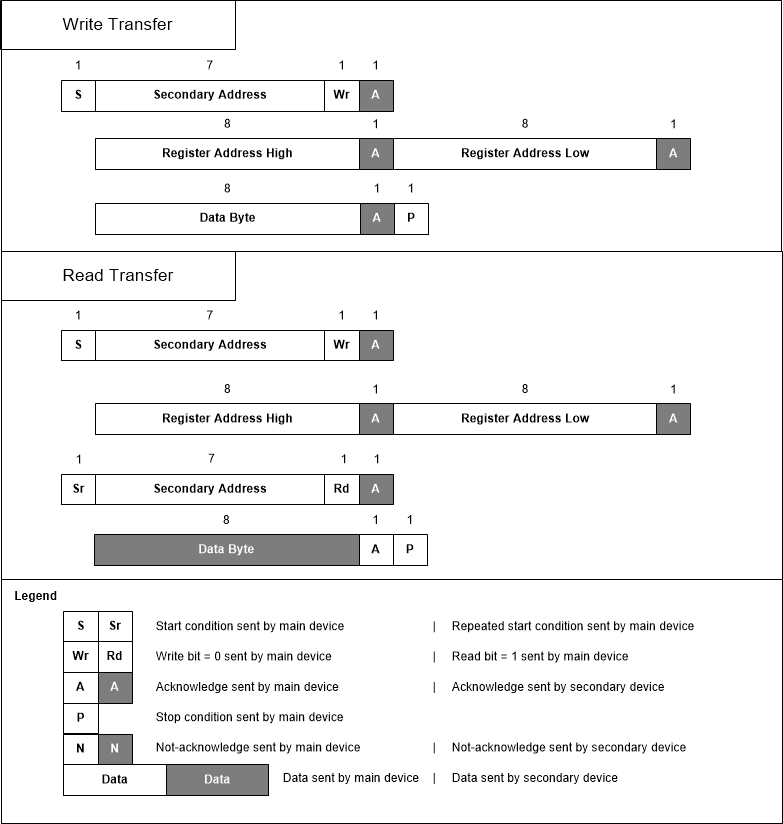ZHCSMJ6B November 2020 – March 2021 LMK5C33216
PRODUCTION DATA
- 1 特性
- 2 应用
- 3 说明
- 4 Revision History
- 5 Device Comparison
- 6 Pin Configuration and Functions
- 7 Specifications
- 8 Parameter Measurement Information
-
9 Detailed Description
- 9.1 Overview
- 9.2 Functional Block Diagram
- 9.3
Feature Description
- 9.3.1 Oscillator Input (XO)
- 9.3.2 Reference Inputs
- 9.3.3 Clock Input Interfacing and Termination
- 9.3.4 Reference Input Mux Selection
- 9.3.5 Hitless Switching
- 9.3.6 Gapped Clock Support on Reference Inputs
- 9.3.7 Input Clock and PLL Monitoring, Status, and Interrupts
- 9.3.8
PLL Relationships
- 9.3.8.1 PLL Frequency Relationships
- 9.3.8.2 Analog PLLs (APLL1, APLL2, APLL3)
- 9.3.8.3 APLL Reference Paths
- 9.3.8.4 APLL Phase Frequency Detector (PFD) and Charge Pump
- 9.3.8.5 APLL Feedback Divider Paths
- 9.3.8.6 APLL Loop Filters (LF1, LF2, LF3)
- 9.3.8.7 APLL Voltage Controlled Oscillators (VCO1, VCO2, VCO3)
- 9.3.8.8 APLL VCO Clock Distribution Paths
- 9.3.8.9 DPLL Reference (R) Divider Paths
- 9.3.8.10 DPLL Time-to-Digital Converter (TDC)
- 9.3.8.11 DPLL Loop Filter (DLF)
- 9.3.8.12 DPLL Feedback (FB) Divider Path
- 9.3.9 Output Clock Distribution
- 9.3.10 Output Channel Muxes
- 9.3.11 Output Dividers (OD)
- 9.3.12 SYSREF
- 9.3.13 Output Delay
- 9.3.14 Clock Outputs (OUTx_P/N)
- 9.3.15 Glitchless Output Clock Start-Up
- 9.3.16 Clock Output Interfacing and Termination
- 9.3.17 Output Synchronization (SYNC)
- 9.3.18 Zero-Delay Mode (ZDM) Synchronization
- 9.3.19 Time of Day (ToD) Counter
- 9.4 Device Functional Modes
- 9.5 Programming
-
10Application and Implementation
- 10.1 Application Information
- 10.2 Typical Application
- 10.3 Do's and Don'ts
- 11Power Supply Recommendations
- 12Layout
- 13Device and Documentation Support
- 14Mechanical, Packaging, and Orderable Information
9.5.2 I2C Serial Interface
When (GPIO1 = 0), the device operates as an I2C client and supports bus rates of 100 kHz (standard mode) and 400 kHz (fast mode). Slower bus rates can work as long as the other I2C specifications are met. When operating with I2C communication interface the SCS_ADD pin selects one of three LSBs for the I2C device address. GPIO0 and GPIO2 input states determine device settings to load from ROM.
When using I2C communication the LMK5C33216 can support up to three different I2C addresses depending on the the state of the CSC_ADD pin on power-up, or any I2C address if the user re-programs the EEPROM. The five MSBs of the 7-bit I2C address are initialized from the EEPROM and the two LSBs are defined by the CSC_ADD pin state. The default EEPROM results in I2C addresses as shown in Table 9-7.
| CSC_ADD Pin State | I2C Address LSB | I2C Address |
| Low | 0 | 0x64 |
| Vmid | 1 | 0x65 |
| High | 2 | 0x66 |
 Figure 9-41 I2C Byte Write and Read
Transfers
Figure 9-41 I2C Byte Write and Read
Transfers